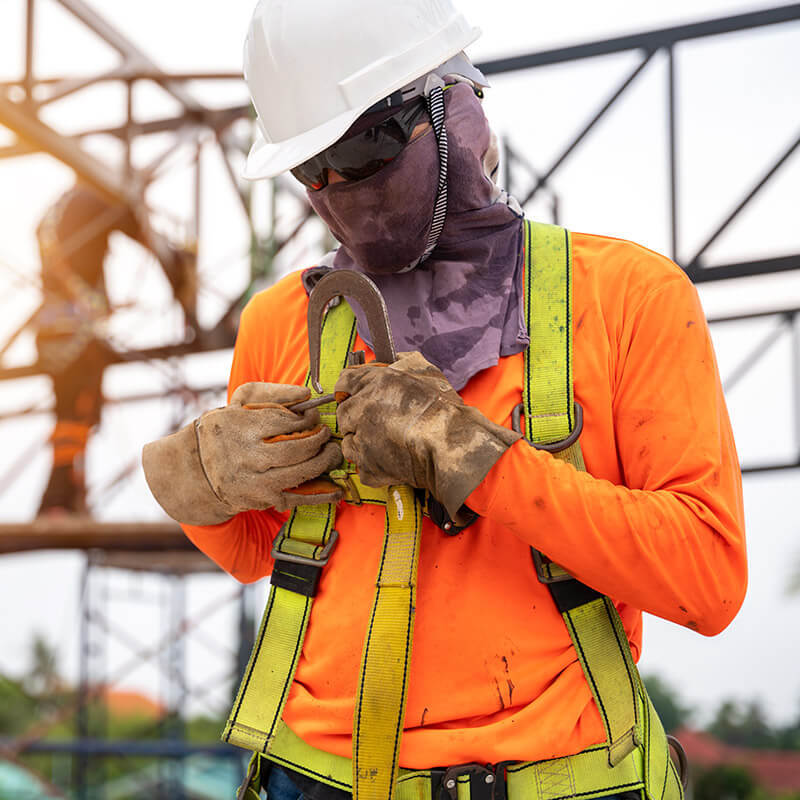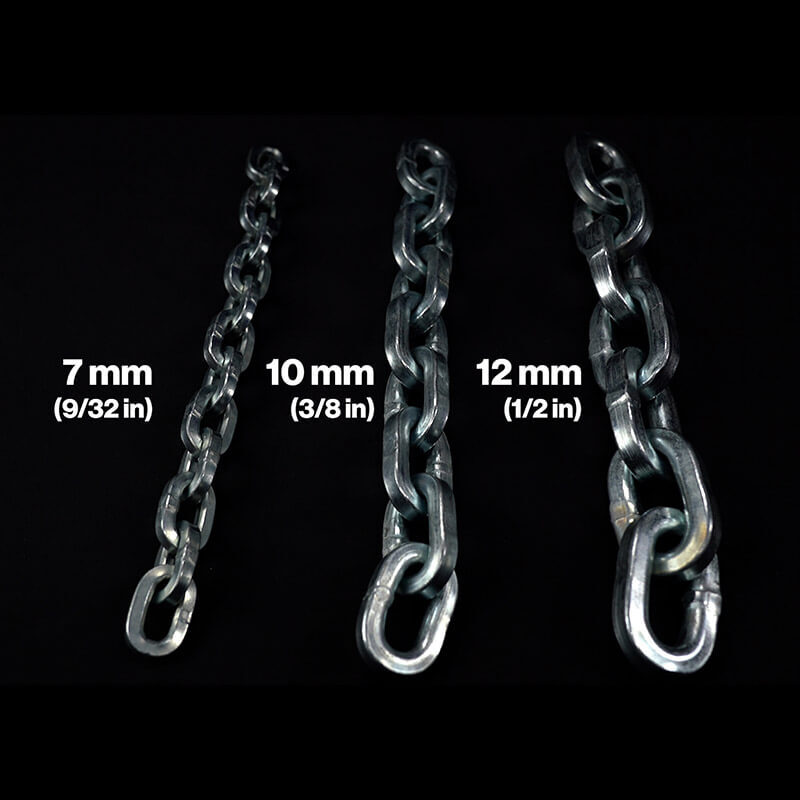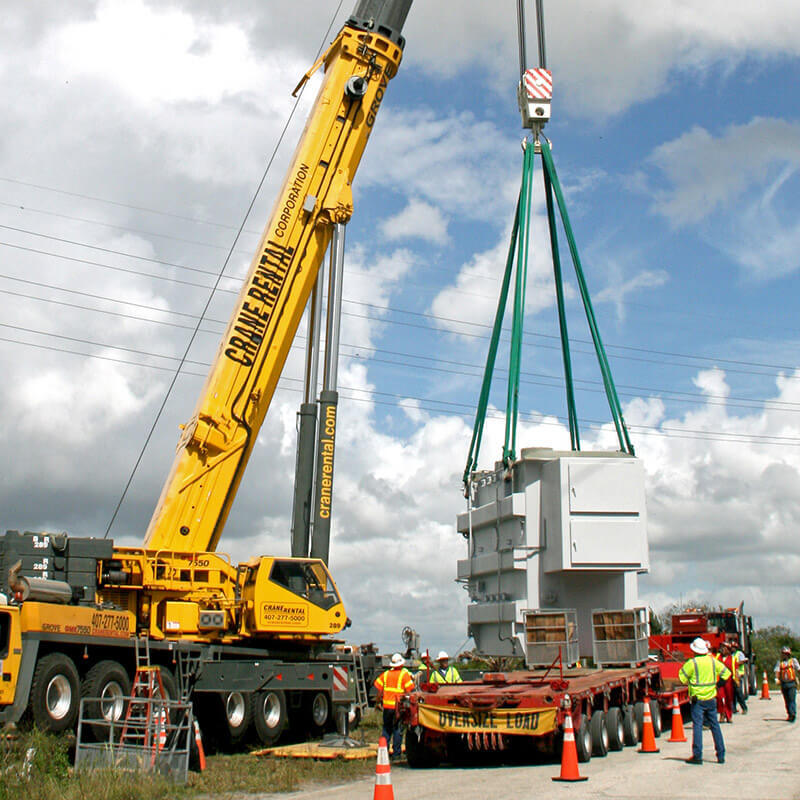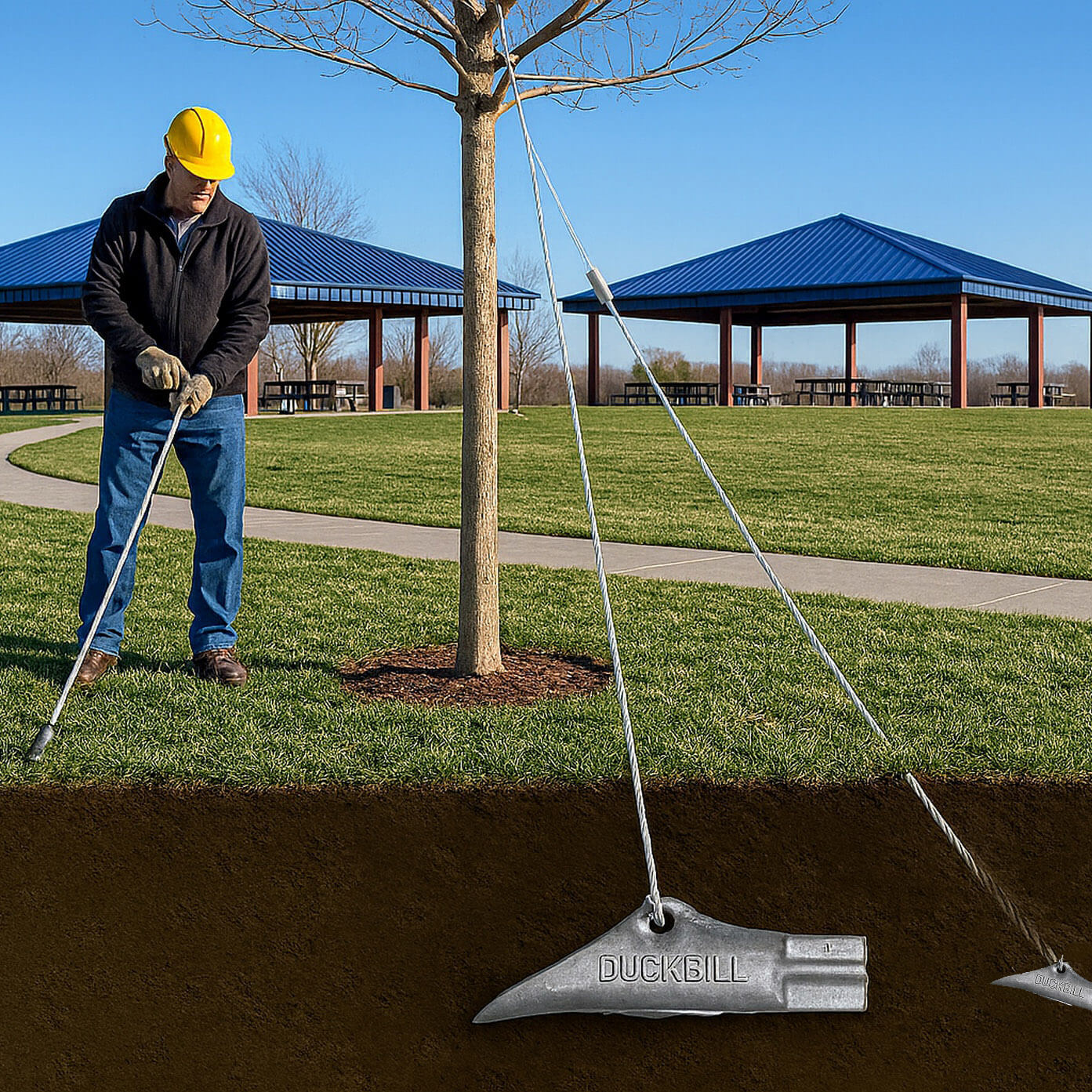What Is a Lifting Chain?
Lifting chains are high-strength steel link assemblies engineered for overhead lifting, load securement, and material handling in demanding industrial environments. Only certain grades of chain—specifically Grade 80, Grade 100, and Grade 120 alloy steel chain—are rated and approved for overhead lifting applications under ASME and NACM standards.
Compared to synthetic slings or wire rope, lifting chain provides superior durability, temperature resistance, and adjustability. When paired with proper attachments and components, chain slings are a versatile and long-lasting solution for lifting heavy loads safely and efficiently.
Why Chain Grade Matters
Not all chain is suitable for lifting. Only alloy steel chain in Grades 80, 100, or 120 is rated for overhead lifting. Lower grades, such as Grade 30 (Proof Coil), Grade 40/43 (High Test), and Grade 70 (Transport Chain), are designed for tie-down or towing applications and must never be used for overhead lifting. These chains lack the ductility, toughness, and traceability required for lifting safety standards.
Lifting chain is classified by grade, which refers to its tensile strength and working load limit (WLL). Choosing the correct grade is essential for both safety and regulatory compliance:
- Grade 80 – The historical standard for overhead lifting. Still widely used but increasingly replaced by higher-grade options.
- Grade 100 – The current industry standard, offering approximately 25% higher WLL than Grade 80 without increasing the chain diameter.
- Grade 120 – The highest strength alloy chain commercially available for lifting. Ideal when space or weight reduction is critical.
- Grade 50, 60/63 Stainless Steel – Used in corrosive or marine environments. While corrosion-resistant, these grades are not as strong as alloy lifting chain of the same diameter and are typically used for specialty applications.
Chain must be selected based on the required WLL, environmental conditions, and lifting configuration. Always ensure the chain is properly tagged and traceable to a qualified manufacturer.
Trusted Lifting Chain Brands
At Lifting.com, we only supply lifting-grade chain from the most respected names in the industry:
- Peerless Chain – A leading U.S. chain manufacturer and member of the Crosby Group, producing high-quality Grade 80, 100, and 120 chain.
- Gunnebo Industries – Known worldwide for alloy chain and integrated rigging components; also part of the Crosby Group.
- Campbell – Offers a broad range of lifting and tie-down chain, with a strong reputation in construction and utility industries.
- Laclede Chain – American-made chain with offerings across lifting, marine, and tie-down markets.
Note: Crosby itself no longer manufactures chain under the Crosby name. Instead, Crosby Group includes both Peerless and Gunnebo as its chain manufacturing arms.
Advantages of Lifting Chain Over Other Options
- Extreme durability: Resists cuts, abrasions, and UV damage better than synthetic slings.
- Temperature resistance: Performs well in hot or cold conditions where other lifting gear might fail.
- Adjustability: Chain slings can be configured with adjustable legs, shortening hooks, or foundry hooks to suit the application.
- Long service life: When properly maintained, lifting chain offers years of reliable performance.
Inspection and Maintenance Best Practices
All lifting chains must be inspected regularly to ensure safety and compliance. Follow these best practices:
- Conduct a visual inspection before and after each use.
- Look for cracks, gouges, elongation, bent links, or corrosion.
- Remove any damaged or suspect chain from service immediately.
- Have periodic detailed inspections performed by qualified personnel, in accordance with ASME B30.9.
- Maintain proper lubrication and storage to prevent premature wear or rust.
Conclusion
Lifting chain is a critical component of any overhead lifting system. Using the correct chain grade and brand ensures the safety of your personnel, the integrity of your equipment, and compliance with industry regulations. Whether you're working in heavy construction, utilities, energy, or manufacturing, lifting-grade chain offers a reliable, long-lasting solution for your most demanding lifting tasks.
At Bishop Lifting, we offer a wide selection of lifting chain, chain slings, and rigging hardware from leading manufacturers like Peerless, Gunnebo, Campbell, and Laclede. Visit lifting.com to browse our catalog or contact us for help selecting the right chain for your job.
FAQ
What is the difference between Grade 80 and Grade 100 lifting chain?
Grade 100 has approximately 25% more strength than Grade 80, allowing for higher lifting capacities without increasing chain size. Grade 100 is the current industry standard for alloy lifting chain.
Can I use stainless steel chain for lifting?
Only specific grades of stainless chain, such as Grade 50 or 60/63, are engineered for lifting applications. However, these are generally weaker than alloy lifting chain and are only used in environments where corrosion resistance is critical.
How do I know if a chain is approved for overhead lifting?
Approved lifting chain will be marked with its grade, manufacturer ID, and a traceable batch code. It must meet NACM and ASME B30.9 requirements. Never use unmarked or uncertified chain for lifting.
Which brands of lifting chain are most trusted?
We recommend lifting chain from Peerless, Gunnebo, Campbell, and Laclede. Peerless and Gunnebo are part of the Crosby Group, a global leader in lifting and rigging solutions.
What Is a Kernmantle Rope Used For?
Nov 21st 2025
What Is a Fall Protection Harness?
Nov 14th 2025
What are the four components of a PFAS?
Nov 7th 2025
Is Palmer Safety OSHA Compliant?
Nov 3rd 2025
What’s the Hardest Chain to Cut?
Oct 20th 2025
What are the most common tools used in rigging?
Oct 13th 2025
What Is the Strongest Security Chain?
Oct 7th 2025
Are Pewag Chains Good?
Oct 3rd 2025
What Are DuckBill Anchors Used For?
Sep 26th 2025










